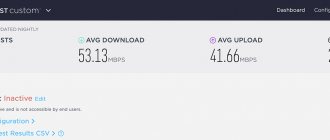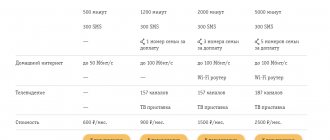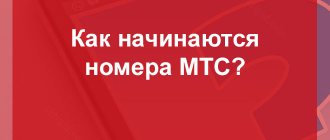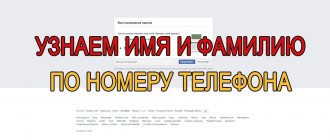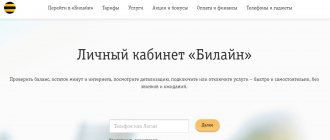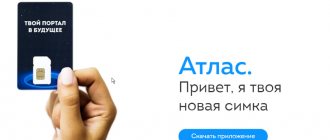The traditional criteria for choosing a mobile Internet operator have become speed, availability of tariff packages and their variety. The leaders in Ukraine in terms of the totality of advantages remain the members of the “Big Three” operators: Kyivstar, Vodafone, Lifecell. Slightly less popular are Intertelecom and Trimob.
Of course, every wireless telephony or mobile Internet service provider tries to satisfy the needs of as wide a target audience as possible in order to gain even greater popularity. Let's figure out how to navigate the abundance of their offers for different client needs.
Mobile communications in Ukraine
Currently, there are six national operators operating in Ukraine. These are Kyivstar, MTS, Life:), which provide services in the GSM standard (MTS also provides 3G services based on CDMA450 1x EV-DO Rev A), TriMob is the only UMTS operator, as well as Intertelecom and PEOPLEnet ", using CDMA 1x EV-DO Rev B and EV-DO Rev A respectively. 90% of the country's territory is covered by 2G, 15% by 3G. There are no 4G networks.
At the same time, there are only three truly large operators with a large area and subscriber coverage base: Kyivstar, MTS and Life:). CDMA operators largely provide mobile Internet services and have a very significant share in their niche. In many respects, this situation has developed due to the lack of free frequencies for the deployment of UMTS/HSPA networks. GSM operators still provide mobile Internet via EDGE. As an alternative, MTS is forced to use CDMA EV-DO Rev A at 450 MHz frequencies for mobile Internet. At the same time, subscribers experience difficulties when traveling to Europe or Russia: their devices and modems do not work.
And the only operator, TriMob (the mobile division of Ukrtelecom), which has UMTS2100 licenses, is not able to build a large and high-quality 3G network throughout the country. The company simply does not have enough money.
It is all the more interesting to observe the situation around Ukrtelecom, which was bought by the SCM group in June 2013. SCM owns a 45% stake in the mobile operator Life:). It is logical to assume that after some time the Life:) operator will be able to launch 3G under its own brand, investing its own investments in construction. However, Ukrainian experts are confident that there is no point in hoping for the imminent appearance of full-fledged 3G. Everything is tied to politics.
So it turns out that our Slavic brothers have room not only for GSM, but also for CDMA. Virtual operators have not taken root in Ukraine, although there have been such attempts. The situation with MVNOs is very similar to what we can observe in Russia.
Mobile operators of Ukraine as of July 1, 2013:
| Operator | Standard | Service | Subscriber base | Market share |
| "Kyivstar" | GSM | voice Internet (EDGE) | 25.6 million | 43,5% |
| MTS | GSM, CDMA | voice Internet (EDGE, CDMA450 EV-DO Rev A) | 21.6 million | 36,7% |
| Life:) | GSM | voice Internet (EDGE) | 8.7 million | 14,8% |
| "Intertelecom" | CDMA | voice Internet (CDMA800 EV-DO Rev B+) | 1.25 million | 2,1% |
| "PEOPLEnet" | CDMA | voice Internet (CDMA800 EV-DO Rev A) | 0.87 million | 1,5% |
| "OGO! Mobile" (Ukrtelecom) | UMTS | voice Internet (UMTS2100) | 0.84 million | 1,4% |
In July 2013, there were 60 million mobile subscribers. At the same time, the penetration rate of cellular communication services reached 130%. This is quite consistent with average European figures.
Choosing the “right” unlimited tariff
First, find out what model your modem is and how much your mobile operator covers the area in which you spend most of your time. There is another option to strengthen the signal by installing a GSM amplifier for cellular communications, but this is a different story and more expensive. It is mainly used in places where it is not possible to receive a high-quality signal from service providers available in the area.
There are two types of 3G/4G modems: CDMA and GSM. The first ones are compatible with Intertelecom services. On the “waves” of the more popular GSM standard, you can feel comfortable with the operators Lifecell, Vodafone, Kyivstar and Trimob.
Roaming with a Russian operator
Currently, every federal operator in Russia provides the opportunity to connect to preferential roaming services. All these services and options apply to Ukraine. However, when traveling to this country, I would recommend buying local SIM cards and using them. Why? Because roaming rates for Russian operators in Ukraine are unreasonably high.
Here is a comparative table of special tariffs and services in international roaming in Ukraine for 2013.
| Operator | Rostelecom | MTS | Megaphone | Beeline | MOTIVE | Tele2 |
| Option name | World roaming | Zero without limits | Eurotariff | Multipass | Roaming NON-STOP | International roaming |
| Connection | 0 | 0 | 0 | 0 | 12 rub. | 0 |
| Subscription fee | 14 rub/day | 25 rub/day | No | 10 rub/day | 2 rub/day | No |
| Incoming calls | 14 rubles/min – first and starting from the 11th minute 0 rub/min – from 2nd to 10th minute | 0 rub/min – from 1st to 10th minute (but not more than 200 free minutes per month) 5 rub/min – starting from 11 minutes | 6 rub. | 5 rub. | 7.7 rub. | 9.45 rub. |
| Outgoing to Russia | 14 rub. | 25 rub/min – 1st minute and from the 6th minute 15 rub/min – from 2nd to 5th minute | 16 rub. | 15 rub. | 149 rub. | 9.45 rub. |
| Outgoing within Ukraine | 14 rub. | 33 rub. | 16 rub. | 15 rub. | 40 rub. | 9.45 rub. |
| SMS | 4 rub. | 7.5 rub. | 6 rub. | 3.95 rub. | 12 rub. | 4.5 rub. |
| Internet per MB | 501 rub. | 358 rub. | 51.2 rub. | RUB 30.21 | 563.8 rub. | 25 rub. |
And these are prices with special options! Without connecting the services described, you will spend 5-6 times more on roaming.
In order not to be left with a non-working phone while roaming, I recommend checking before your trip whether the international roaming service is activated on your number. You must also ensure that you have enough money in your account to take into account expenses.
To top up your roaming account, you can use a bank card linked to your phone number or express payment cards. In an emergency, you can somehow ask your relatives or loved ones to top up your phone balance.
The second (economical) way to stay connected is to buy a SIM card from a local operator. This method will help you save a lot of money on communication services, since all calls from local cellular companies from Ukraine to Russia cost 5-7 times cheaper than Russian calls with roaming.
Local SIM card
As in other European countries, two types of tariffs are available to customers: prepaid and contract. The prepaid payment system assumes complete anonymity of the subscriber. To purchase a SIM card you do not need a document proving your identity. For this reason, SIM cards can be bought anywhere and from anyone: in a salon, at a train station, at a newsstand, in an underground passage, etc. The contract provides for the formal conclusion of an agreement. To do this, the subscriber will need an ID card. At the same time, contract tariffs allow you to receive services on credit. Only a resident of the country can become a contract subscriber. According to the Ukrainian Statistics Center, 80% of subscribers use cellular communications on a prepaid basis, 20% on a contract basis.
It is also worth noting that many prepaid and contract tariffs of Ukrainian operators have a so-called connection fee (CCC). It is debited once at the time of each call. CCD appeared several years ago and became a reaction to the law obliging operators to charge each call per second from the first second.
The average cost of a contract tariff with unlimited voice within the network, a block of 4000 minutes to other networks, 1000 SMS, free mobile Internet, 100 minutes on international calls is 600 hryvnia (2400 rubles) per month. The package is half the size and without international calls will cost 1,000 rubles per month.
People who are in Ukraine temporarily (work, study, vacation), for the most part, use prepaid tariffs. These offers have good consumer properties; you can connect to them without documents, at customer service centers or in regular retail outlets and supermarkets. Tariffs do not have a subscription fee, but some of them have a mandatory monthly payment that must be credited to the account. In addition, the account is replenished with payment cards, and the minimum denomination of cards is 30 hryvnia. You can top up your account without any problems using a bank card.
When connecting, the subscriber will be charged from 50 to 30 hryvnia, and the SIM card account will have a balance of 30 to 15 hryvnia. For a Russian citizen, this may seem like robbery, but in Ukraine such rules have developed.
The cost of calls abroad to landlines and mobile phones may differ with a lower tariff for calls to landlines. The cheapest calls are to subscribers in Russia. True, we can only talk about this when using special “travel” or tourist tariffs. They are 10-20 times cheaper than basic offers. For example, the minimum price for Russian fixed-line numbers at a special tariff is from 60 Russian kopecks per minute. A mobile call will cost more – 3 rubles on average. The basic rate is 48 rubles per minute. A call to the European Union on a promotional tariff costs 3.5 rubles per minute, and on a basic tariff – 72 rubles per minute.
Examples of current tariffs of the prepaid payment system for mobile communications in 2013 in Ukraine. Prices are indicated in rubles at the rate of 4 rubles per hryvnia, excluding the fee of 7.5% of the cost of the service to the Pension Fund of Ukraine.
| Operator | Kyivstar | Kyivstar | MTS | MTS | Life:) | Intertelecom | PIOPLEnet |
| Rate | Hello, whole world | Base | Tourist MTS | Simple MTS | International life:) | A simple solution | Smart Start |
| Subscription fee | No | No | No | No | No | No | 140 rub (140 minutes, 389 SMS, 500 MB of traffic) |
| Connection fee | 4 rubles for the first international call per day | 0 | 3 rubles | 0 | 3 rubles | 0 | 0 |
| Outgoing within the network | 0.65 RUR | 1 rub | 0.6 RUR | 2.4 RUR | RUB 1.96 | RUB 2.24 | 0 |
| Outgoing to mobile | 2 rubles | 3.4 RUR | 2 rubles | 2.4 RUR | 4 rubles | RUB 2.24 | 0 |
| Outgoing to fixed. oper. | 2 rubles | 3.4 RUR | 2 rubles | 2.4 RUR | 8.4 RUR | 4 rubles | 4.9 RUR |
| Outgoing to Russia | 0.76 rubles – to landline and Beeline RUB 2.76 – to mobile phones | 48 RUR | 0.6 rub – for city and MTS 3 rubles – to mobile phones | 48 rub. + 4 RUR (CCD) | 0.48 rub – for city tickets 3 rubles – to mobile phones | RUB 3.96 | 4 rubles |
| SMS within Ukraine | 2 rubles | 2 rubles – first; 1 rub – starting from the second per day | 2.4 RUR | 2.4 RUR | RUB 2.76 | 0.08 RUR - online 1.2 RUR - other | 0 — intranet 1.2 RUR - other |
| SMS to Russia | 2 rubles | 6 rub | 0.6 rub – to MTS-Russia 2.4 RUR - other | 6 rub | 7 rub | RUB 3.96 | 4 rubles |
| Internet | 12 RUR/day for unlimited 50 MB without restrictions | 40 rubles per MB | 40 rubles per MB (60 kopecks for the first MB) | 40 rubles per MB (60 kopecks for the first MB) | 24 rubles daily for a 60 MB block, then 0.4 rubles per MB | 0.6 rub per MB | 0 |
As the table data shows, mobile communications in Ukraine cost almost the same as in Russia. Ukrainian tariffs are several times lower than in the UK, Germany, Spain and other European countries. However, there are some peculiarities here in the form of connection fees and inadequately high basic tariffs for mobile Internet. It is worth talking about the Ukrainian mobile Internet separately.
How to understand who is calling if the number is landline
Landline numbers did not go into oblivion, but were reborn into a special type of “wired” communication. Operators offer large companies, such as banks, convenient conditions for using wired communications. From such landline phones you can call anywhere. So, for your attention, we offer a list of landline codes for major cities in Ukraine:
West of Ukraine:
- 033 - Lutsk;
- 032 - Lviv;
- 031 - Uzhgorod;
- 034 - Ivano-Frankivsk;
- 035 - Ternopil;
- 036 - Exactly;
- 038 - Khmelnitsky;
- 037 - Chernivtsi.
North of Ukraine:
- 044 and 045 - Kiev ;
- 041 - Zhitomir;
- 046 - Chernigov;
- 054 - Amounts.
East of Ukraine:
- 057 - Kharkov;
- 062 - Donetsk;
- 064 - Lugansk.
South of Ukraine:
- 048 - Odessa;
- 051 - Nikolaev;
- 055 - Kherson;
- 061 - Zaporozhye;
- on the territory of occupied Simferopol, the code 0652 was previously used, and now, according to the innovations of the occupiers, “3652”.
Center of Ukraine:
- 043 - Vinnitsa;
- 056 - Dnieper;
- 052 - Kropyvnytskyi;
- 053 - Poltava;
- 047 - Cherkasy.
Mobile Internet
Mobile Internet in Ukraine can be used either on an unlimited basis, per megabyte, or by purchasing blocks of traffic. The first option is more typical for CDMA operators, since they may have special problems transmitting a huge amount of Internet traffic through their 3G networks. The last option is used by GSM operators. All of them, with the exception of the TriMob operator (OGO! Mobile), are limited by the EDGE ceiling. For this reason, roaming GSM subscribers from Russia and Europe experience low Internet speeds.
In general, the tariff parameters are very similar to Russian ones. Unlimited tariffs of CDMA operators have a fixed block of traffic with no speed limit. Then the speed is reduced to 128 Kbps. The subscriber has the opportunity to purchase an additional traffic package without speed limits. In addition, some tariffs are completely unlimited. The subscription fee in this case is about 900 rubles per month. Data transfer speed is limited to 3 Mbit/s.
A USB modem and an R-UIM card can be purchased at any operator office or in partner stores. The average price of the device is 340 hryvnia for CDMA 1x Rev A (1360 rubles) and 600 hryvnia for the version with support for CDMA 1x Rev B (2400 rubles).
As for 3G and even more so LTE, Ukraine is among the laggards here. The deployment of the first third-generation network in Ukraine started back in July 2006 using . However, the operator was able to allocate only $150 million to build the network, which was clearly not enough for nationwide coverage. Experts then stated that the actions of the management of Ukrtelecom were caused only by the desire to increase the capitalization of the company and prepare it for future privatization. Moreover, some market participants cautiously stated that the deployment of 3G communications is still premature and all data transmission tasks can be solved using EDGE and GPRS technologies.
In 2013, Ukrtelecom is still the only holder of a 3G license, but over the years it has not been able to deploy a full-fledged network even within Kyiv, not to mention other large cities. Other operators cannot obtain a license due to the fact that the necessary radio frequency resource is occupied for the needs of the military, and the procedure for frequency conversion has not yet been approved.
At the same time, the introduction of new generation communications has a positive effect on the economy. Thus, according to the GSMA report, a 10% increase in 3G network coverage increases GDP per capita by 0.15%. Analysts made this conclusion after analyzing 96 developed and emerging markets. For the stagnating economy of Ukraine, the rapid introduction of 3G could become a lifesaver that would at least slightly increase GDP growth.
It is noteworthy that due to the lack of full-fledged 3G communications based on UMTS and HSPA technologies, in Ukraine several providers are quite successful in providing mobile high-speed Internet using CDMA and Wi-Max technologies. Moreover, the introduction of 3G will have an impact on this market, but will not lead to its deformation. The fact is that third-generation communications are not cheap, and in order to quickly recoup the costs of its deployment, operators develop it only in places with a high concentration of population.
At the same time, such players as Freshtel, Intertelecom and PEOPLEnet are niche and provide their high-speed mobile Internet services in areas where 3G communications will not appear soon. Therefore, in villages, Internet access services from these operators will continue to be in demand. But in cities, after the advent of 3G UMTS communications, there may be an outflow of subscribers from niche operators.
Currently, there are four third generation networks operating in Ukraine. The Ukrainian division of MTS uses an NMT license in the 450 MHz band. The network was deployed using CDMA EV-DO Rev technology. A in 2007. CDMA EV-DO Rev technology has also been launched in some areas. B. In this network, the operator provides exclusively data services.
One of the leaders in 3G coverage area, provides 3G services using EV-DO Rev A technology (license in the 800 MHz band). Two years ago, Intertelecom launched Internet access using EV-DO Rev B technology with information transfer speeds of up to 14.7 Mbit/s.
In addition, 3G Internet is available to subscribers of the PEOPLEnet operator, which uses CDMA EV-DO Rev A technology in the 800 MHz frequency range. Well, and the long-suffering mobile division of Ukrtelecom - TriMob, which works with UMTS technology. True, 3G only works in the ten largest cities in the country, but even there the coverage leaves much to be desired.
Examples of current tariffs for mobile Internet in 2013 in Ukraine. Prices are indicated in rubles at the rate of 4 rubles per hryvnia, excluding the fee of 7.5% of the cost of the service to the Pension Fund of Ukraine.
| Operator | Kyivstar | MTS | Life:) | OGO!Mobile | Intertelecom | PEOPLEnet |
| Name | Unlimited | 3G connection | life:) online | Standard | Super Unlimited 150 | Unlimited L |
| Type | batch | unlimited | batch | batch | unlimited | unlimited |
| Subscription fee | 580 rub/month | 24 rub/day | 120 rub/month | 480 rub/month | 600 rub/month | 396 rub/month |
| Traffic block | 20 GB per month | unlimited | 100 MB per day | 8 GB per month | 2 GB per day | 15 GB per month |
| Speed over block | No limits | No limits | No limits | No limits | 128 Kbps | 128 Kbps |
| Peculiarities | Over the block – 0.04 rubles per MB. Max speed 368 Kbps | CDMA modem required | Over the block – 0.04 rubles per MB. Max speed 368 Kbps | Over the block - 0.04 rubles per MB. Max speed 3 Mbps | CDMA modem required | CDMA modem required |
At the same time, I would like to note the huge number of wi-fi points with free access in Kyiv, Donetsk, Kharkov and Lvov. This became possible largely thanks to last year's European Football Championship. During preparation for this event, about 300 free hotspots were installed in cities. These networks are called “wi-fi ua (free)”. Points are available in historical places, train stations and airports. In addition, almost every cafe or restaurant has a separate free outlet.
The Ukrainian mobile communications market turned out to be incredibly interesting from the point of view of intrigue and politics. Some features contradict logic, but Ukraine would not be Ukraine without it.
Firstly, the CDMA and Wi-Max standards are still in demand and flourishing in the country. This is due to the lack of 3G licenses from GSM operators. For the same reason, mobile Internet at acceptable speeds can only be obtained in the networks of CDMA operators. The only operator with a 3G license is not involved in infrastructure development due to chronic underfunding. At the same time, the state has been inactive for 8 years.
Secondly, voice communication tariffs in Russia are surprising with their low prices. Calling relatives from Kyiv to Dnepropetrovsk costs the same as a city line to Tyumen! And in general, mobile communications in many respects are cheaper for Ukrainians than in neighboring countries.


